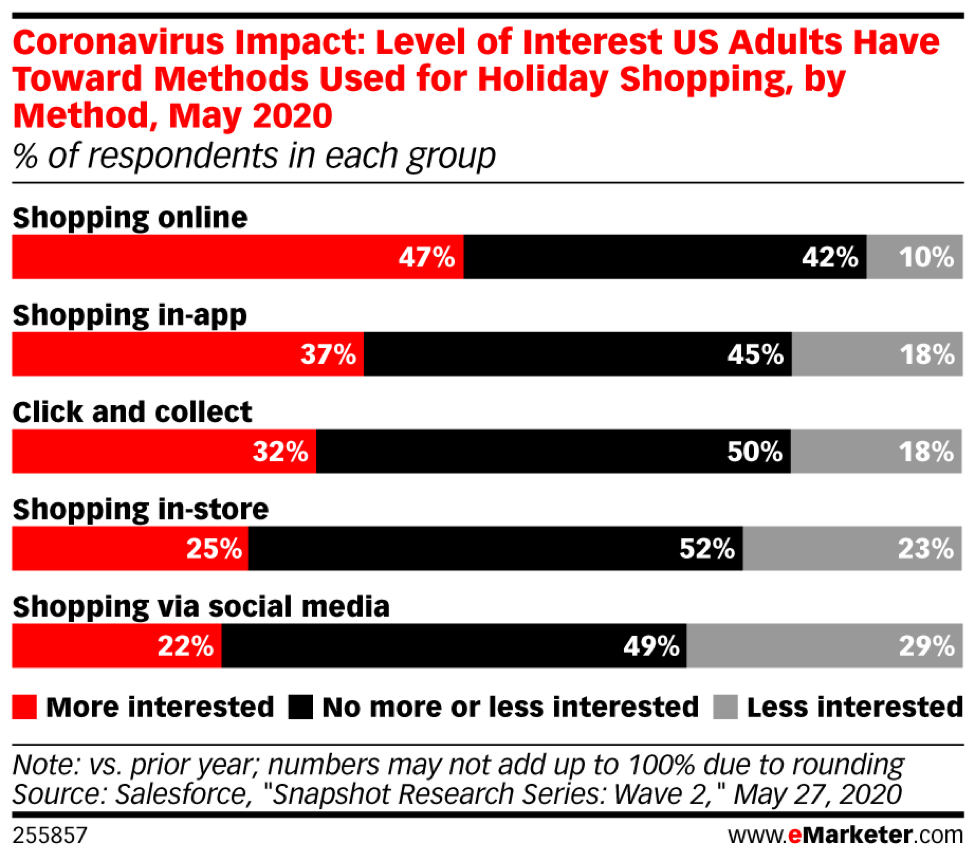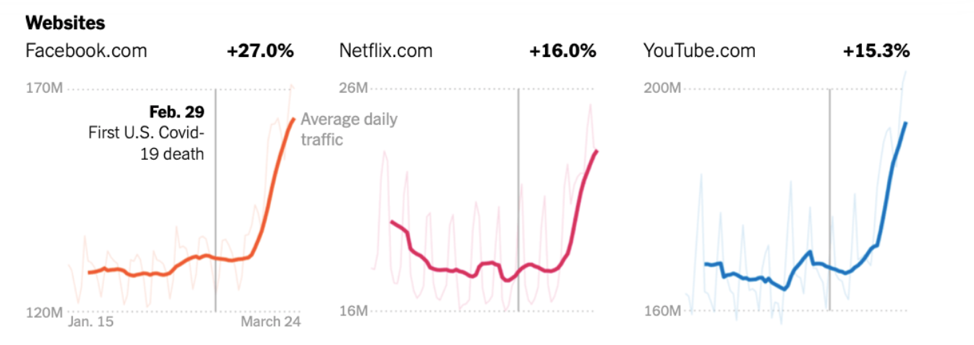COVID-19 has changed all the aspects of customer behavior, now & forever.
According to Mckinsey & Co the shift in the customers’ behavior are visible across 8 areas of life namely: Work, Learning, Communication & Information, Shopping & Consumption, Life at Home, Travel and mobility, Play & entertainment & Health and wellbeing.
Customers’ behaviors, attitudes, researching & purchasing habits have primarily changed and many of these new habits will stay post-pandemic. Sailing ahead from the pandemonium crisis of 2020, the dawn to the next normal is witnessing people shopping more consciously.
As an increasing number of people continue to work from home, there is a considerable increase in the time being spent on socializing through digital channels and the adoption of digital ecommerce.
Many new avenues have opened up for the marketers as many of the post-pandemic trends are still forming & evolving.
Let’s see what are these behavioral changes & how these are reshaping the buyers’ journeys across multiple touchpoints and how marketers can buckle-up for these - to win customer loyalty, and optimize their customer experience management frameworks to foster trust and long-lasting relationships with their customers:
- Accelerated Adoption of Digital Transformation & Omnichannel
The COVID-19 pandemic has accelerated the willingness of customers to embrace digital technologies, this is especially true for customers of the technology, media, and telecom sectors. Also, customers are looking for solutions to their desired problems across multiple channels on the web.
Accordingly, marketers also need to make peace with this tremendous acceleration in digital transformation & employ the latest MarTech tools to design the best experiences for their customers. Another important factor for the brands to consider is the consolidation of their customer experiment management architecture across omnichannel. Customers love to be served with seamless experiences across multiple touchpoints, and this expectation has elevated to new heights during the pandemic crisis.
- Empathy Lies at the Core of Designing New Experiences
During the pandemic crisis, customers want brands to forge lasting connections with them, one that stems from a place of empathy. Empathy transcends caring in a way that you needn’t just care for your customers but needs to put yourselves in customers’ shoes, feel and analyze their pain-points and accordingly provide tailored solutions to their problems; preferably in real-time.
During the COVID-19 pandemic, customers are valuing the brands that lead with empathy and genuinely address their needs. This helps in building the credibility of the brands in the eyes of the customers, inspires trust, and fosters strong and lasting relationships between brands and their customers that buds from a mutual feeling of reverence.
Brands must inspire, trust, transparency, and empathy among customers along with phenomenal experiences to be traded with.
- Decline in Consumptions
The COVID-19 pandemic disrupted the economies across the globe. The world is witnessing the greatest recession of the century & customers have reciprocated by cutting on their consumption habits.
According to the World Data Lab, the fall in consumption hasn’t been even across sectors. The collapse in consumption has been majorly reflected in services while the consumption of goods has only witnessed a modest decline.
Some of the sectors such as traveling, hospitality, education, clothing, and other goods and services, personal care, social services, and labor organizations, recreation, transportation, and health are amongst the worst hit sectors during this economic slowdown.
- Hyper-personalization Along Decision Journeys Preferred by Customers
Customers are valuing hyper-personalization more than ever during the COVID-19 pandemonium. Let’s admit, humanity has just witnessed one of the worst crises ever. It hasn’t been easy for any of us and none of us have the patience or endurance to fall prey to marketing gimmicks or false promises during such unprecedented times.
One of the major shifts in customers’ behaviors, navigating on the road to the next normal has been that they have started valuing hyper-personalization more than ever. They expect their favorite brands to provide them with tailored experiences all along their decision journeys. They also desire to be communicated in a personalized tone. This means that brands need to serve them with hyper-tailored pieces of content – on social platforms, through email marketing campaigns, blog posts, dynamic content strategy, or any other way of content deliverance that one can possibly think of.
- The rise in Adoption of e-commerce
A major impact of COVID-19 on customers’ behavior has been the rapid rise in online purchases and the adoption of e-commerce.
Research by Technomic.com substantiates that an increasing number of people have started shopping online for a growing number of new product categories as about 52% of the customers are trying to abide by the norms of social distancing.
COVID-19 has increasingly caused some of the biggest retail chains to expand their e-commerce sales. E-commerce has equipped people to get their novel needs to be served by the businesses as they continue to purchase across diverse categories.
- Larger Baskets & Reduced Shopping Frequency
Because of the COVID-19 pandemic, the shoppers have majorly started shopping in bulk and with reduced frequencies. This is the primary purpose of the shoppers remains to avoid the infection and have as many essentials at home, as possible, within a short span of time.
- Local Purchases Picking-Up
One of the major shifts in the customers’ behaviors during pandemic has been the growing love of the customers for local shops and products. This not only has led to the growth of the local shops but has also caused brands to explore ways to connect locally – by highlighting local provenance or customizing local needs or engaging locally with the customers on all the levels possible.
- Polarization of Sustainability
The era of the pandemic has made customers realize the importance of sustainability like never before. Customers’ behaviors have shifted and they have started prioritizing sustainable ways of life like never before. Customers now increasingly favor brands that reflect on transparency and a culture of sustainability. Sustainable ways of life have gained traction in all the spheres of life including geopolitical, economic, environmental, and other societal factors. The pandemic has exposed human vulnerability & people are increasingly becoming more aware of themselves & valuing sustainable ways of living.
Keeping in view the polarization of sustainability, the brands need to shift their strategies on environmentally-sustainable consumerism.
- Shift to Values and Essentials
The COVID pandemic saw a surge in value-based marketing. Customers are expecting their favorite brands to be value-centric. They like to be cared for during these difficult times, like never before. At the same time, the focus has shifted from a luxury to the essentials. Essential value chains across the world are being disrupted and somehow the focus is on trying and keeping the essential value chain moving.
- Holiday Spending Reduced Initially But Picking Up Gradually
As most of the customers were confined indoors owing to the threat of the pandemic, the cost of holidays and recreational activities initially dwindled but a report by PwC advocates that the spending might shoot up by as much as 11% in the current year and as many as 40% of the customers plan to do so.
- Contactless Services Being Preferred
According to a report by GlobalData, contactless services have gained traction, specifically in the travel and tourism industries.
Customers are also preferring contactless deliveries and accordingly the brands need to accelerate their investments in contactless technologies including the following primarily:
- Biometric boarding
- Contactless check-ins & elevators
- Contactless hospitality
- Disinfection robots
Other key cases of contactless technologies promoting safety in the industry include thermal screening, automated hand sanitizers, mobile apps enabling touchless entry to tourist destinations and contactless payments.
- Customers Will Prefer Brands that Support Healthy Lifestyle
According to a study by Accenture, 64% of the customers are fearful about their health conditions during the pandemic. Hence, they are also focusing on buying lifestyle products that are good for their health and are also investing in products that will directly or indirectly give them good health.
Brands need to attend to this change and should ensure that they encourage their customers to adopt a healthier approach towards their lives.
- Consumptions To Be More Conscious
Because of the global inflation and polarity shift to sustainable ways of living like never before customers are becoming more mindful of what they are buying. They are striving to make the optimum utilization of the resources available to them. Accordingly, brands should gear up to provide their customers with more sustainable and cost-efficient solutions. Exploring sustainable business options will be a strategic differentiator on the paths to the new normal for the brands to outlast the competition.
- Virtual Spaces are the New Normal
A report by Accenture shows that 46% of people who are working from home plan to do so more often in the future.
Virtual spaces are becoming the new normal and customers are spending more time on gamification and over the social media platforms.
According to eMarketer, 51% of U.S adults are using social media at higher rates during the pandemic. Also, customers are increasingly spending more time on mobile devices.


Image Source: stackla.com
According to a report by Statista, 70% of internet users worldwide are using smartphones as a direct result of the coronavirus outbreak.
To keep abreast with the shift in customers’ engagement on virtual platforms, brands need to amplify the omnichannel experiences with the customers. Companies need to reframe their future around evolving customer behavior.
To Sum It Up
COVID-19 has led to major shift in the attitudes, behaviors and shopping habits of the customers online. Most of these shifts are new and will forever remain with the customers. As people are serving more consciously and many of these behavioral trends will be ever-lasting. Adoption of more sustainable ways of living is a major change. Digital will continue to proliferate and customers will be increasingly investing in products that make work from home more convenient and fun.
There will be an increase in the virtual workforce. As more people will work from home, they are more likely to invest in products that make work from home easy, more convenient, and fun.
Local brands have taken precedence and personal health and financial security will remain among the top priorities of the customers.
Customers continue to be more tech-savvy than ever and therefore, the marketing & sales teams need to reinvent the shopping experiences for customers across omnichannel. The pain-points of customers need to be addressed in real-time, and the experiences and the pieces of content they are served with should stay relevant across multiple touchpoints.
In a post-COVID world to win the loyalty of the customers, brands need to capture and address their evolving needs and behaviors while prioritizing their health, safety and keeping the element of empathy intact.
